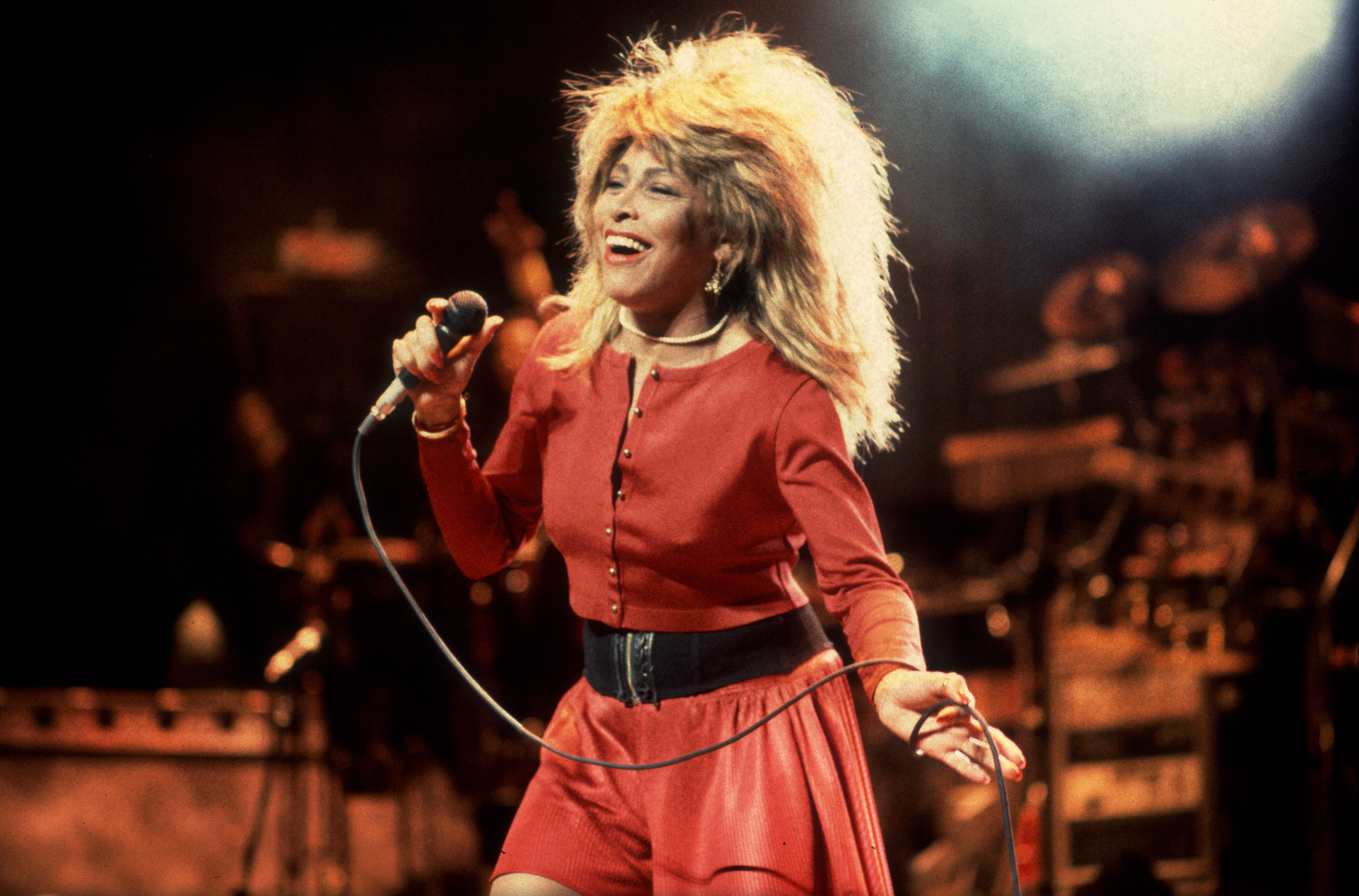Tina Turner obituary: ‘the Queen of Rock’n’Roll’
The legendary singer made ‘one of the most extraordinary comebacks in showbusiness history’

Tina Turner, who has died aged 83, was an “earthshaking singer whose rasping vocals, sexual magnetism and explosive energy made her an unforgettable live performer and one of the most successful recording artists of all time”, said The New York Times. She was also one of the music world’s great survivors, with a life that divided into several remarkable acts.
An ‘extraordinary comeback’
The neglected daughter of sharecroppers, raised in the Jim Crow-era South, she’d started her career in the 1950s, when she became part of Ike Turner’s musical ensemble. That led her to professional acclaim – they had a string of hits in the 1960s – but also domestic misery. Ike Turner was a violent, serially unfaithful cocaine addict, who had started beating her soon after their marriage, in 1962.
She finally left him in 1976, said The Times – literally running away, covered in blood, with 36 cents in her pocket. At the hotel where she sought sanctuary, the manager posted a security guard outside her door, in case Ike came looking for her. By the time their divorce was finalised, two years later, she was living on food stamps, heavily in debt. Ike had trademarked her name (so that if she left him, he could simply hire another Tina Turner); to keep it, she’d had to agree to take on a vast unpaid tax bill on their joint musical earnings. “Yet her pride and self-respect were intact and she gradually began not only to rebuild her life, but to stage one of the most extraordinary comebacks in showbusiness history.”
The Week
Escape your echo chamber. Get the facts behind the news, plus analysis from multiple perspectives.

Sign up for The Week's Free Newsletters
From our morning news briefing to a weekly Good News Newsletter, get the best of The Week delivered directly to your inbox.
From our morning news briefing to a weekly Good News Newsletter, get the best of The Week delivered directly to your inbox.
After a period singing at sales conferences and on the cabaret circuit, she found a new manager, Roger Davies, and called on some of her friends to help her build her solo career. The Rolling Stones and Rod Stewart hired her as their support act; then David Bowie told executives at his label that she was his “all-time favourite singer”, and suggested they watch her perform. They agreed to sign her, but what happened next “took everyone by surprise”.
Her 1984 single “What’s Love Got to Do with It” went to No. 1 and won three Grammys. The album it was on, Private Dancer, sold ten million copies. All this paved the way for a string of further hits and spectacular world tours, establishing her as one of the biggest stars of that era. She sold more concert tickets than any solo performer ever, and played to a record-breaking crowd: 180,000 people, at a stadium in Rio. “You take away the bondage, the problems, the hang-ups, the egos, and I can fly,” she’d told the LA Times in 1984. “I can laugh, I can dance, I can sing, and I don’t grow tired. Freedom. That’s my motivation.”
A ‘little girl with a big voice’
She was born Anna Mae Bullock in Nutbush, Tennessee, in 1939, where her father managed a plantation. Her mother seems never to have loved her. Her father, who was violent, left when she was 13. She was largely brought up by her grandmother. But she was, she said, a “little girl with a big voice” – who longed to perform. She joined the choir at her local Baptist church. “They sang at the top of their lungs, they were possessed by God,” she recalled.
In 1954, she went to live in St Louis. She found work as a hospital orderly and in the evenings, frequented the local R&B clubs. One night, she saw Ike Turner performing with the Kings of Rhythm, and asked if she could sing in the intermission. He was already a leading figure in the industry, a producer, songwriter and talent scout. He had worked on Jackie Brenston’s Rocket “88”, regarded by some as the first rock’n’roll record. He turned her down that night, but a few nights later she came back, grabbed a microphone and brought the house down with a B.B. King standard.
A free daily email with the biggest news stories of the day – and the best features from TheWeek.com
Becoming Tina
Turner invited her to become one of his backing singers (later, he told her to change her name to Tina – to rhyme with the comic-book character Sheena, Queen of the Jungle; in the same vein, he urged her to develop a wild onstage persona). It was in 1960 that she sang lead vocal for the first time, said The Guardian. A session singer had not turned up, and she was asked to fill in. The single, “A Fool in Love”, was a hit in both the pop and R&B charts; and Ike rebuilt his band around her.
Following their marriage, he adopted the son she’d had with a fellow musician; she adopted his two sons, and they had another son together. (Both her biological sons predeceased her. Craig, whom she described as a “troubled soul”, took his own life in 2018; Ronnie died of complications of colon cancer in 2022.)
“Radiating raw sexuality and bludgeoning audiences with the unvarnished force of her voice”, she established the band as a major presence on the R&B circuit. Phil Spector so admired her voice, he asked her to sing on River Deep – Mountain High, to which he gave his trademark “wall of sound”. He thought it one of his best works, but though it was a hit in the UK, it failed to take off in the US, causing him such distress that he stopped recording for two years.
In that decade, Ike and Tina toured twice with the Stones; Mick Jagger was fascinated by Tina’s dance moves and stage presence. This collaboration gave Ike and Tina bigger crossover appeal, and in 1971, they had their biggest US hit, a cover of “Proud Mary”.
Off stage
Ike Turner terrorised her. He threw scalding coffee over her, punched her to the ground, and beat her even when she was pregnant. Once she had to go on stage with a broken jaw. In the years after their divorce, she released a few solo albums, and had a British chart hit with a pop synth cover of “Let’s Stay Together”, with members of Heaven 17. But it was Private Dancer that turned her, in her mid-40s, into one of the world’s biggest stadium stars.
In 1985, she performed a riotous duet with Jagger at Live Aid. Their chemistry was palpable (she admitted to a crush); she had arguably even more with Bowie, when he appeared on stage with her that year to duet on his song “Tonight”. Lip readers concluded that the old friends had briefly become lovers.
She brought her Valkyrie charisma to the role of a warrior queen in the film Mad Max Beyond Thunderdome, and to countless arenas on the many world tours that followed. Her later chart hits included “The Best”, which became one of the era’s great anthems. In her former incarnation, she’d felt imprisoned by the shimmering gowns Ike Turner had dressed her in; as a solo artist, she wore mini-dresses, so that she could dance unconstrained.
In the late 1980s, she met and fell in love with Erwin Bach, a German music executive. They settled in Switzerland, and married in 2013. Soon after, her health began to fail; in 2017, he gave her one of his kidneys. “He shows me that true love doesn’t require the dimming of my light so that he can shine,” she wrote of their relationship. “On the contrary, we are the light of each other’s lives, and we want to shine as bright as we can, together.”
-
 Art that made the news in 2025
Art that made the news in 2025The Explainer From a short-lived Banksy mural to an Egyptian statue dating back three millennia
-
 Nine best TV shows of the year
Nine best TV shows of the yearThe Week Recommends From Adolescence to Amandaland
-
 Winter holidays in the snow and sun
Winter holidays in the snow and sunThe Week Recommends Escape the dark, cold days with the perfect getaway
-
 The best homes of the year
The best homes of the yearFeature Featuring a former helicopter engine repair workshop in Washington, D.C. and high-rise living in San Francisco
-
 Critics’ choice: The year’s top 10 movies
Critics’ choice: The year’s top 10 moviesFeature ‘One Battle After Another’ and ‘It Was Just an Accident’ stand out
-
 A luxury walking tour in Western Australia
A luxury walking tour in Western AustraliaThe Week Recommends Walk through an ‘ancient forest’ and listen to the ‘gentle hushing’ of the upper canopy
-
 Joanna Trollope: novelist who had a No. 1 bestseller with The Rector’s Wife
Joanna Trollope: novelist who had a No. 1 bestseller with The Rector’s WifeIn the Spotlight Trollope found fame with intelligent novels about the dramas and dilemmas of modern women
-
 Appetites now: 2025 in food trends
Appetites now: 2025 in food trendsFeature From dining alone to matcha mania to milk’s comeback
